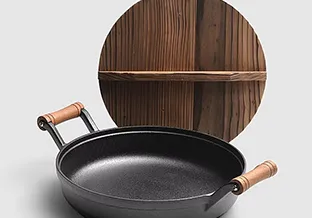
refurbishing cast iron skillet
Refurbishing a Cast Iron Skillet A Step-by-Step Guide
Cast iron skillets are beloved kitchen staples known for their durability and excellent heat retention. Over time, however, they can become rusty or lose their natural non-stick seasoning. When this happens, don’t despair! Refurbishing a cast iron skillet is a simple process that can restore it to its former glory. Here’s a step-by-step guide on how to refurbish your cast iron skillet.
1. Assess the Condition
Before you begin the refurbishing process, it’s important to assess the condition of your skillet. If there is rust, flaking seasoning, or food buildup, these issues will need to be addressed before seasoning can be reapplied. A skillet with deep cracks or severe deterioration may need to be retired, but most cast iron cookware can be saved with a bit of effort.
2. Cleaning the Skillet
Start by cleaning your skillet thoroughly. If there are food residues, soak the skillet in hot water for a brief period. Use a non-metal brush or sponge to scrub off any stuck-on bits. For rust, sprinkle a generous amount of coarse salt and scrub with a non-metal pad. If the rust is stubborn, you can use a mixture of vinegar and baking soda. Rinse well and make sure it’s completely dry after cleaning, as water can cause rusting.
refurbishing cast iron skillet

For deeply rusted skillets, you may need to resort to more drastic measures. Using fine steel wool or a rust eraser, scrub the rusted areas until you see the bare metal. This may take some time and elbow grease, so be patient. Once the rust is removed, wipe the skillet with a clean cloth to remove any debris.
4. Re-Seasoning the Skillet
Now that your skillet is clean and rust-free, it’s time to re-season it. Preheat your oven to 375°F (190°C). Apply a thin layer of vegetable oil, flaxseed oil, or shortening to the entire surface of the skillet, including the handle and the bottom. It’s important to use a paper towel to remove excess oil; you want a very thin, even layer.
Place the skillet upside down on the middle rack of the oven, and place a baking sheet on the rack below it to catch any drips. Bake for one hour, then turn off the oven and allow the skillet to cool inside. This process helps create a non-stick surface and protects the skillet from future rust.
5. Maintenance Tips
To keep your cast iron skillet in optimal condition, always dry it immediately after washing and apply a thin layer of oil before storing. Avoid using soap, as it can strip the seasoning. With proper care, your refurbished cast iron skillet can last for generations, providing delicious meals and reminiscent of home-cooked comfort.
Refurbishing a cast iron skillet is not only a rewarding experience but also a sustainable way to keep a cherished piece of kitchenware in use. So roll up your sleeves and get started on bringing your skillet back to life!
-
Season Cast Iron Perfectly with GPT-4 Turbo TipsNewsAug.01,2025
-
High Quality Cast Iron Cookware - Baixiang County Zhongda MachineryNewsAug.01,2025
-
Premium Cast Iron Pan: Durable & Perfect HeatNewsAug.01,2025
-
High Quality Kitchen Durable Black Round Cast Iron Cookware Pancake Crepe Pan-Baixiang County Zhongda Machinery Manufacturing Co., Ltd.NewsAug.01,2025
-
Cast Iron Cookware - Baixiang County Zhongda Machinery | Nonstick, Heat ResistanceNewsAug.01,2025
-
High Quality Kitchen Durable Black Round Cast Iron Cookware - Baixiang County Zhongda Machinery | Non-Stick, Heat Retention, DurableNewsJul.31,2025


